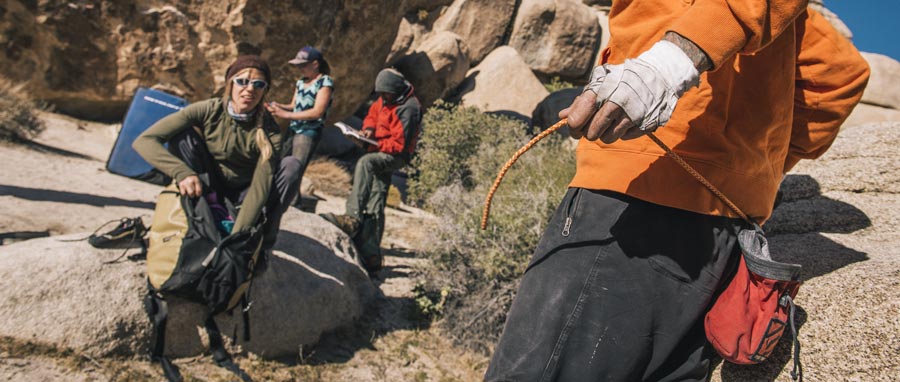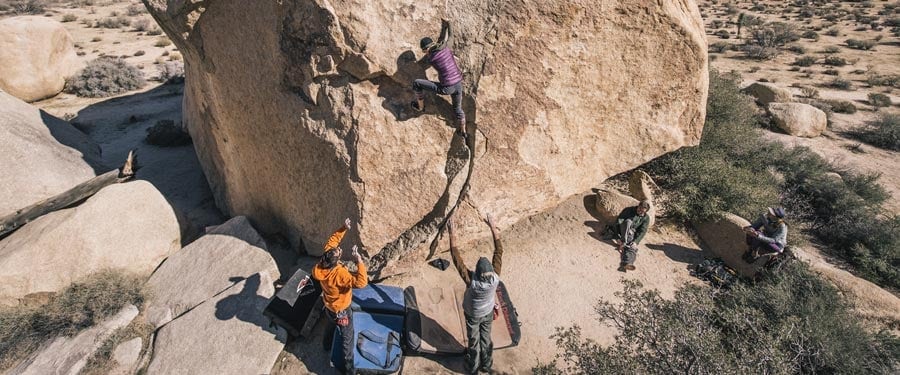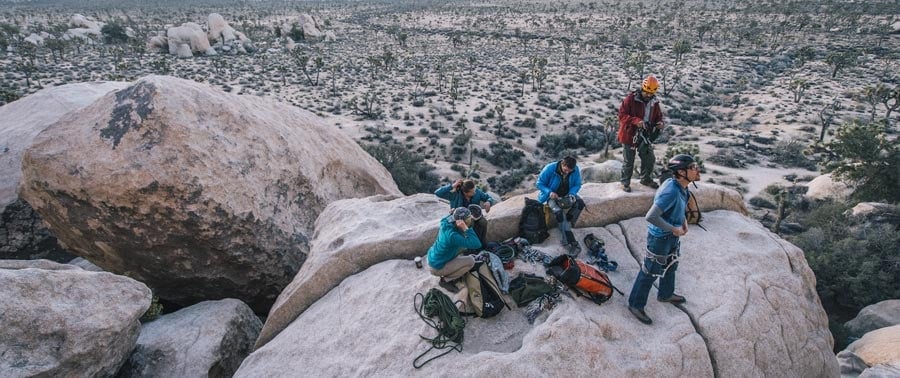Though some gym climbers never venture beyond their climate-controlled world, for most of us, our outdoor spirit inevitably longs for its place in the sun. If you've made the decision to try "real" rock climbing, a little preparation is in order.
The outdoor world requires similar skills and knowledge to gym climbing, but it also presents additional challenges. You need to do more preparation, have the right gear and master new skills.
Find a Guide
Your first move in transitioning to outdoor climbing is to find a certified guide to take you to a nearby crag, or find a qualified instructor with experience teaching beginning outdoor climbers. A good instructor can help you understand how to climb in the elements, and will be able to teach you more advanced skills like setting and cleaning your own anchors.
Because many facilities offer classes to help you transition, your gym is a good place to start. REI Outdoor School classes can also teach you the outdoor ropes.
Find a Climbing Class at REI Outdoor School
Gear for Outdoor Climbing

Borrowing Gear: While it's tempting to borrow gear initially to save money, do so with caution. Never borrow any hardware or other key safety gear if you don't know its full history in detail. Hardware might have hidden damage (microcracks) and nylon components (like harnesses, slings and ropes) can degrade from abrasion, UV rays or even liquids. That doesn't leave many borrowing options except clothing, rock shoes and chalk.
A notable exception to the "what not to borrow" rules is gear provided by your certified guide or instructor. These pros are required to do extensive safety checks, and to keep a detailed safety log for all key pieces of gear.
Buying Gear: Your guide or instructor should provide a list of all the gear you need to purchase before your outing or class. To learn more about gear that's likely to be on those lists, and for links to articles on how to choose each item, see the Basic Climbing Gear section of our article, Getting Started Rock Climbing.
Clothing Needs: Your sleek, stretchy gym wear is fine when the sun is shining on the crag and the temperatures are mild. But you also want appropriate layers in case the weather gets cool or wet. At a minimum, it's nice to have a warm jacket to wear when you're waiting your turn on the route. For more info, read our Expert Advice article, Layering Basics.
Outdoor Climbing Options for Beginners

Different styles of outdoor climbing require different levels of experience. The best options for those venturing outside for the first time are listed below.
Bouldering
Bouldering is outdoor climbing done on rock faces, boulders and other surfaces close to the ground. No ropes or harnesses are needed, so you don't need a lot of climbing gear to try it. It's extremely popular with beginning climbers because being closer to the ground makes fear less of a factor. And bouldering is a great activity to learn new techniques.
If you try your hand at bouldering, you can look for an introductory class or outing. Or you can go with experienced climbers who can act as spotters while you climb. Although you're relatively close to the ground, the risk of injury is still present.
Top-Rope Climbing
Top-rope climbing outdoors will be similar to your gym experience. You climb toward an anchor at the top of your route while your guide or instructor belays you. The primary difference outdoors is that you have to use unmarked natural hand- and footholds as you progress. Because of this, your instructor will likely put you on routes with a lower difficulty rating than you typically do indoors.
More Advanced Types of Climbing
Sport Climbing
Outdoor sport climbing routes typically have bolts drilled into the rock and you must carry quickdraws that you use to clip in.
Initially, when you sport climb, you do something called "mock lead climbing." That requires both the rope you clip in with and a top rope. This technique lets you practice clipping in to bolts without having to fall as far when you make a mistake.
When you progress to lead climbing, you no longer rely on a top rope attached to a top anchor to hold a fall. Instead you rely on each bolt you clip into as you ascend. The net effect is that you fall farther if you slip on a lead climb.
For a further discussion about different types of climbing, see Getting Started Rock Climbing.
Climbing Etiquette in the Outdoors

Like any outdoor activity, climbing has a code of conduct. This extension of Leave No Trace principles, though, is critically important because huge numbers of gym climbers are making the move into a very limited number of outdoor climbing areas. The Access Fund, which advocates for climbers worldwide, reports that one in five areas are closed because of perceived liability issues or climbers no longer being welcome.
Reading and following The Pact, a special pledge developed by the Access Fund, is a great place to start:
- Respect other users.
- Dispose of human waste properly.
- Park and camp in designated areas.
- Stay on established trails.
- Place gear and pads on durable surfaces.
- Clean up chalk and tick marks.
- Keep a low profile, minimizing group size and noise.
- Pack out all trash, crash pads, and gear.
- Respect closures.
- Be an upstander, not a bystander.
To learn more, read our article Climbing Ethics: Leave No Trace.
Remember: Safety is your responsibility. No article or video can replace proper instruction and experience. Make sure you're practiced in proper techniques and safety requirements before you climb.

